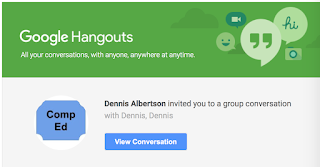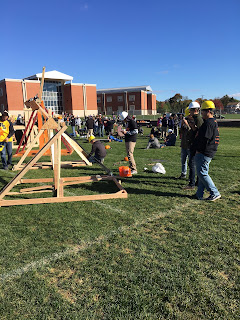“For those who choose to experience this eclipse outside the path, a partial eclipse is all they will see. Even if the sun is 99.9% eclipsed for these observers, they will not experience the full, jaw-dropping, knee-buckling, emotionally-overloading, completely overwhelming spectacle that is totality.” – Dan McGlaun, veteran of twelve total solar eclipses, From Columbia, SC Fact Sheet.
I first learned about The Great American Eclipse at an NSTA conference about 2 years ago. There was a lot of great information and we even received eclipse glasses back then, went outside and looked at the sun. That was nice and I was hoping schools would catch the excitement. I have done work with schools and teachers over the past year, but I never planned to stay in PA for our 81% eclipse. I planned to head towards totality. Well, it was a great decision and turned out to be a fantastic experience. I could even become an eclipse chaser! And a better planner as well:). My son and a friend and his daughter headed to Columbia, SC for the event. I made hotel reservations about a year in advance. We took off on Sunday for the trip down. Our selected site to view was the South Carolina State Fairgrounds. We had a big breakfast, stopped by the Piggly Wiggly for drinks, snacks and ice supplies, Albert's Deli for terrific sandwiches and headed for the Fair. We had a nice spot and friendly neighbors. In between setting up electronics to capture the event, we had great conversations and played some washer toss.
 |
| My son and me hanging out waiting for science |
 |
| Looking at the Sun and waiting |
The day was full of angst as cloud cover could potentially interrupt the event. We were given a 50-50 chance of clear skies. When I woke on Monday, the local weather folks were saying that high pressure
should keep the clouds away.
 |
| Around 1:20 PM |
 |
| The excitement builds |
 |
| Right before the cloud moves in |
 |
| About 20 minutes to totality and not looking good. |
At 1:13 PM, we had mostly clear skies where the Sun was in the sky and could see the moon moving in front. We took a few pictures as the Moon passed in front. You could see and feel the excited building. A few clouds started moving in and we could spot the Sun most of the time. As the big moment approached, however, a set of clouds had moved in. We were counting the minutes and finally the seconds to 2:41 PM and cloud just wouldn't see to move. The skies were darkening and people were shouting at the cloud to get out of the way. Finally, at the last moment, literally, the cloud seemed to scoot away and we were left with a view I will never forget.
 |
| The cloud is moving just a moment before totality |
 |
| The start of totality |
 |
| Glasses were off but you can see how close the cloud was |
 |
| Here is one of our pictures of totality. Doesn't do it justice |
Totality came with a quick flash and we took off our glasses. It was amazing. I have seen so many pictures but it just doesn't capture the actual view I saw. Awesome!!! My son came over and leaned on me as we just watched. That was definitely an emotional moment for me. I hit the remote for the camera a few times and then all too quickly, we saw the bright diamonds telling us to put our glasses back on. We stood around for a few minutes and looked again at the Sun peeking out from behind the Moon and tried to put into words, that which was breathtaking. We slowly packed up to start our long journey home, only to have a bit of rain start. This just made the timing a bit more perfect for us.
 |
| Totality ends in a spectacular way |
Here is a
360 Video Clip to see our surroundings. Here is the
full view of the clouds moving. The best part occurred when Ian walked over and put his arm around me. Hard to see in the dark.
So what did we learn? This was a fantastic way to reinforce the periodic nature of the universe and how science can truly predict these motions. I also learned that I need more time onsite for the next one. A few days before and at least a day after - it took us 3.5 hours to drive 60 miles in trying to return home. We took video, 3D video, and pictures to various degrees. It captures the memories, but being there was almost surreal. The next total solar eclipse worldwide takes place on July 2, 2019 in South America. In the lead up to the event, I helped to create
student activities, taught workshops, led
webinars, tested materials and
3D printed parts to help record and learn about eclipses. At the end, I was reminded how awesome Nature truly is.
Can we make reservations 7 years in advance? Can't wait for
April 8, 2024.





































